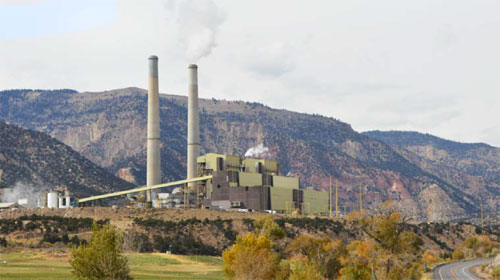In anticipation of the coming effects of power plant closures and declining coal production in Utah and in an effort to help affected areas in the state, the Kem C. Gardner Policy Institute at the University of Utah has released a report that references the institute’s 40-year population and employment planning projections. The institute said the research will help local officials and policy makers plan for the coming decades as economic circumstances continue to change.{mprestriction ids="1,3"}
“Carbon and Emery counties face continued economic hardships in the years ahead,” said Price Mayor Mike Kourianos. “But by working together, and with informed research to guide us, we can address our competitive advantages and our role in a prosperous Utah economy for decades to come.”
The study found that both Carbon and Emery counties have lost population in recent years due to net out-migration and job losses and the countires are expected to experience population decline in the 2030s, driven both by out-migration and low natural increase. However, starting in 2040, positive net migration is expected to create new growth in the county.
Employment is projected by the study to decline and then begin to recover. As employment declines in the natural resources and utilities sectors, there will be large effects on the local economy. Greater economic diversity will help to maintain employment levels closer to existing levels.
The study concludes that Carbon and Emery counties face six likely economic and demographic challenges over the next several decades:
• Declining employment from the natural resources and utilities sectors.
• Concentration of manufacturing growth in Northern Utah counties.
• Peaking projected employment growth, particularly in manufacturing, in 2040.
• Declining fertility rates.
• Increasing out-migration of young populations.
• Net in-migration of retirement-aged populations.
Included in the report are potential strategies for Carbon and Emery counties over the next 20 to 40 years:
• Create a set of connected five-, 10- and 20-year economic development strategies. Projected economic and demographic growth shows the importance of prompt action in the face of the scheduled power plant closures in 2036 and 2042. These dates are useful guidelines but changing market forces have caused some power plants to close earlier than scheduled. Additionally, employment in manufacturing and similar industries is projected to peak in 2040.
• Connect federal, state, regional and local resources. The U.S. Economic Development Administration emphasizes a regional strategy in the guidelines for the comprehensive economic development strategy and through the grant application process for its various programs.
• Increase economic diversity. Carbon and Emery are among the least economically diverse counties in the state. Projected industry growth through 2060 includes higher concentrations of tourism-related employment in accommodations and food services, and in arts, entertainment and recreation. There is additional opportunity in attracting remote workers to the region and investing in energy research and technology and manufacturing.
“Utah’s Coal Country is a lot like the other 150 coal communities scattered around the country,” said Castle Dale Mayor Danny Van Wagoner. “We have a vision to diversify and invest in a bright future for our children and grandchildren.”
The full report is available online at the Gardner Institute website.{/mprestriction}








